Knowledge Exchange
This is a field exploration project which was executed under the brief of Design a series of "seeing machines" that should identify an aspect of a community that you think is significant, hidden in plain site or not typically accessible.
The ‘seeing machine’ should both expose you and document this unique dimension for others. The assigned location was Vermont street, Los Angeles.
The ‘seeing machine’ should both expose you and document this unique dimension for others. The assigned location was Vermont street, Los Angeles.
Field Exploration
Los Angeles
Los Angeles
Vermont Avenue, LA
Vermont street is a hub of various sorts of established institutes, businesses, shops, public places, etc. The one side of the street consists of 3 colleges and an institute for blinds and the other side have local recreational and youth gathering spot, like tattoo parlour, car repair, Pool Bar, hookah lounge, Game Arcade, etc.,
All these structural spaces contains knowledge of different modalities, but they are growth oriented nonetheless. The non-educational spaces encapsulate realistic non-clinical experience-based knowledge, which is unfortunately only passed down from the owner to predecessor and cannot be learned in a classroom.
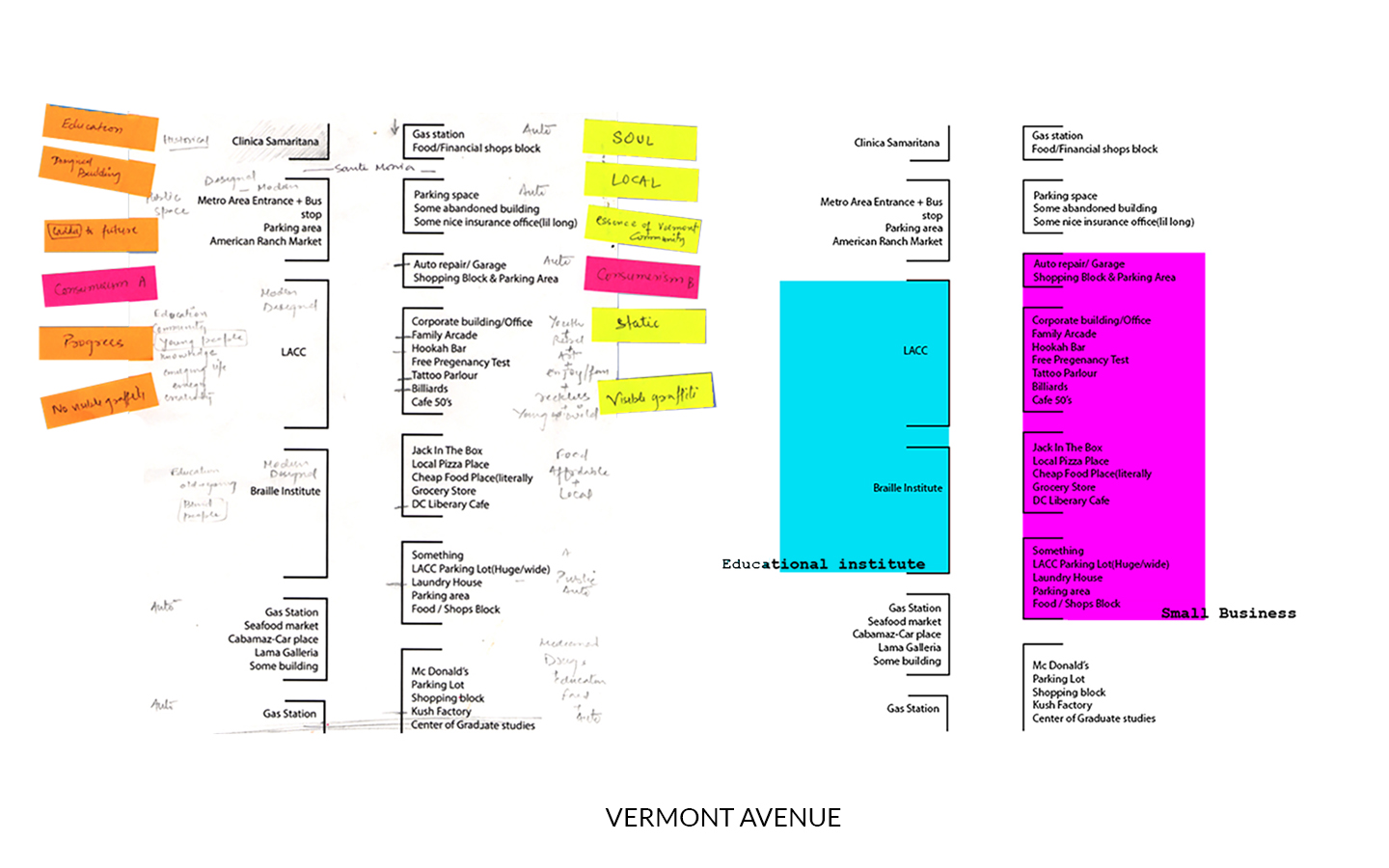
How can you re-construct the idea of a book which can curate knowledge from a non-educational space and share it with general public?![]()
Research Questions:
How can these informal non-academic spaces become a source of education too?

What does marketing means to them?
What are the obstacles that they face?
What are the tools they use?
How to get to the point they are right now?
What are the obstacles that they face?
What are the tools they use?
How to get to the point they are right now?
Prototype
After 2 weeks of exploration, research and rapid prototyping, a new form of book was designed which allowed to facilitate the knowledge exchange between the students across the street and the business owners. It challenges the traditional form of the text books as a way of recording and distributing knowledge.
The vertical scroll has different sections of different size made of colored paper attached to the main cardboard cylinder body. It features personal notes from the person working at the particular business, drawing of the tool they use with descriptions and few guided steps. It can be opened and closed with a simple thread.
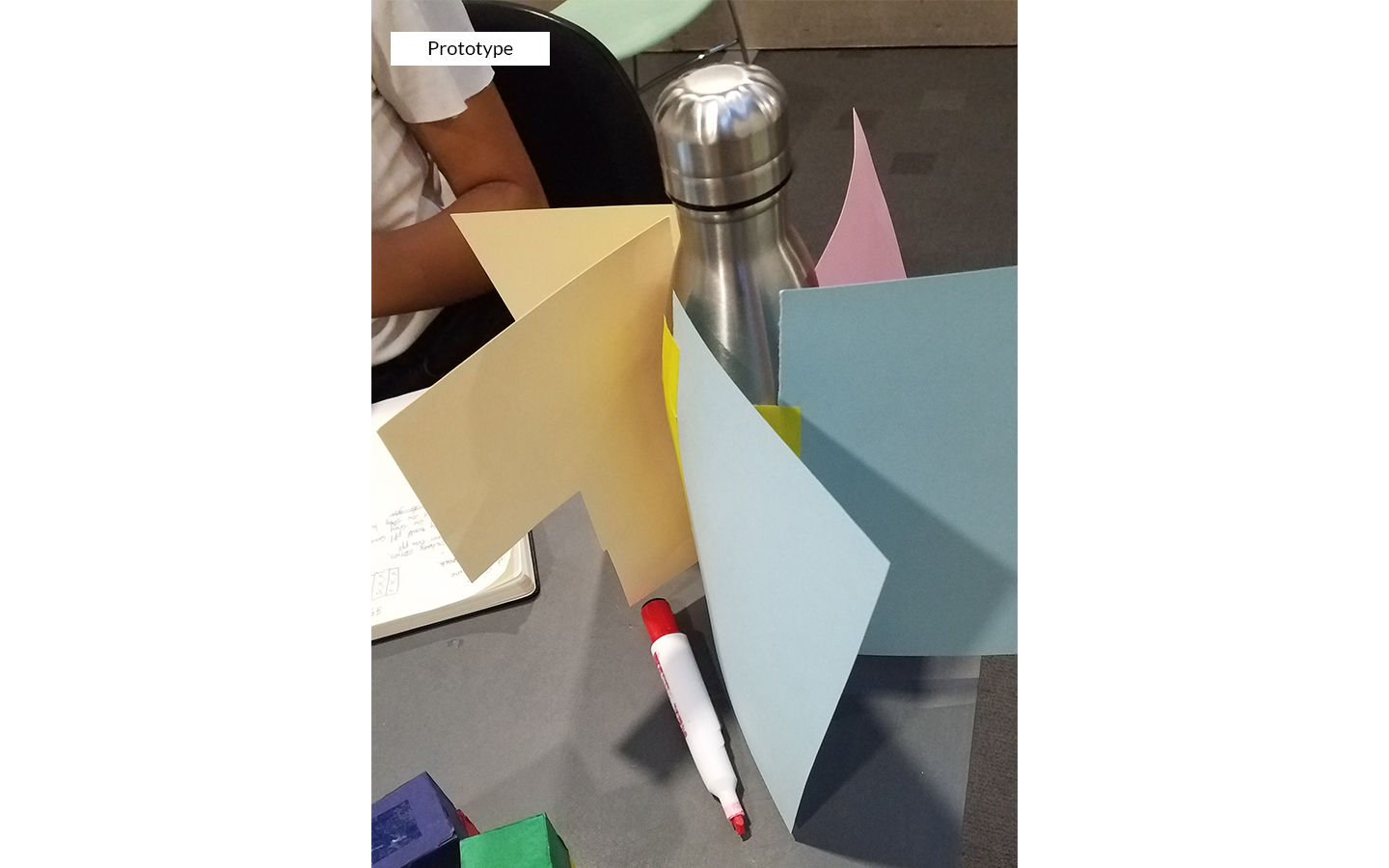
Field Deployment
The participatory exersice asked people to provide information about their daily job, something specific that will help someone else understand a process or understand critical information which might be otherwise unavailable to people not engaging in that space.



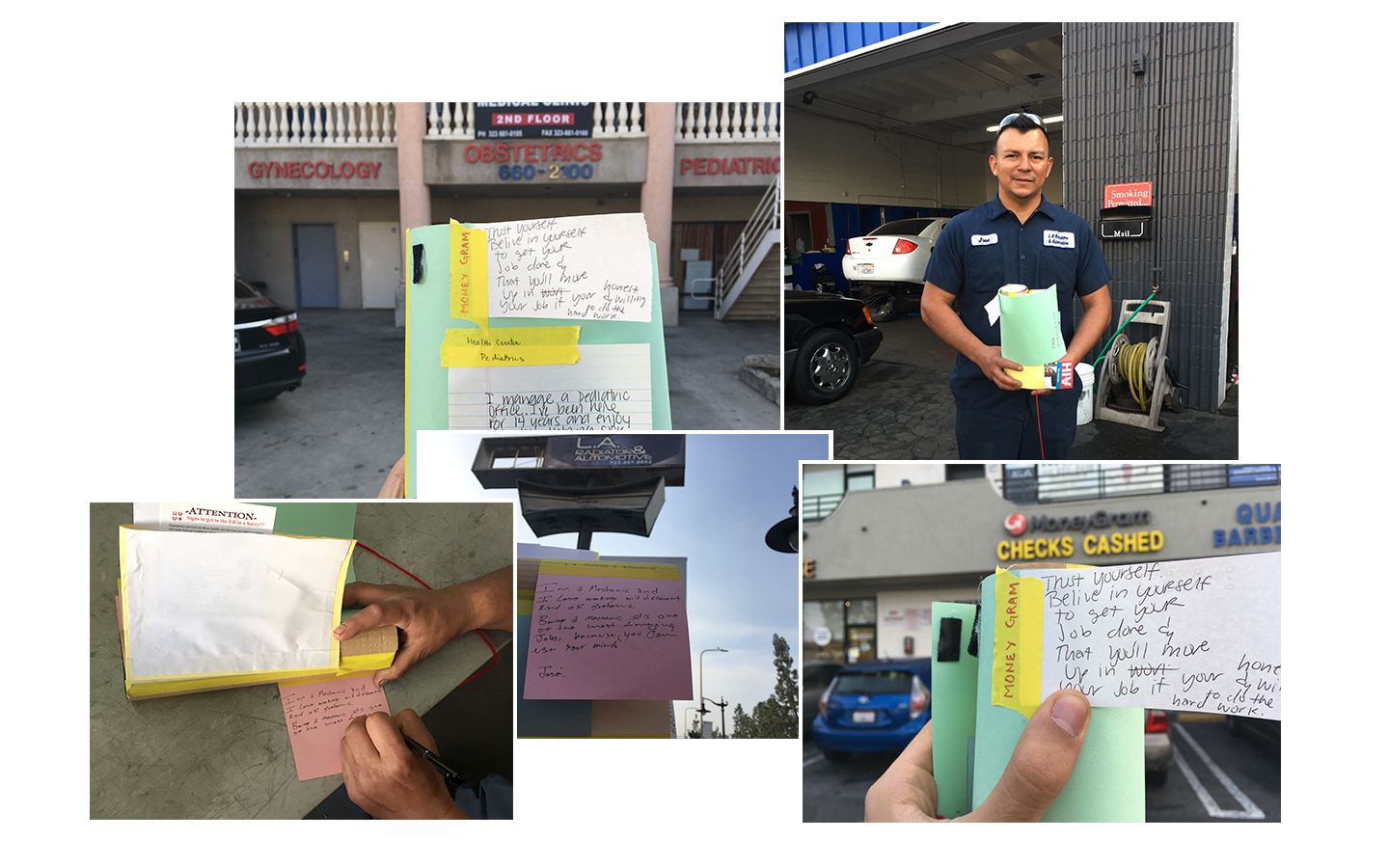


New Research Questions
Some critical questioning that emerged from the deployment were:
Why do we assume that students need this information?
What is the difference between formal and informal institute?
How reconstructing the style of a book is helping to reveal or initiate an exchange?
Who is it for and who is it from?
Can it create a two-way exchange?
Can it be a series of more than one and deployed in the public?
Can it be self-sustainable?
What if it can be exclusive book for one business?
What is the difference between formal and informal institute?
How reconstructing the style of a book is helping to reveal or initiate an exchange?
Who is it for and who is it from?
Can it create a two-way exchange?
Can it be a series of more than one and deployed in the public?
Can it be self-sustainable?
What if it can be exclusive book for one business?
Case Study:
Tattoo Parlour
The tattoo parlor is situated right in front of LACC. A place affiliated with body art, rebellion, youth, gang violence, creativity, coolness, and other derogatory slangs etc., In any case, it has a rich history of tattoo symbols, tattoo artists, tools, machines, colors, rituals, techniques, career, etc., which can be shared in form of knowledge.
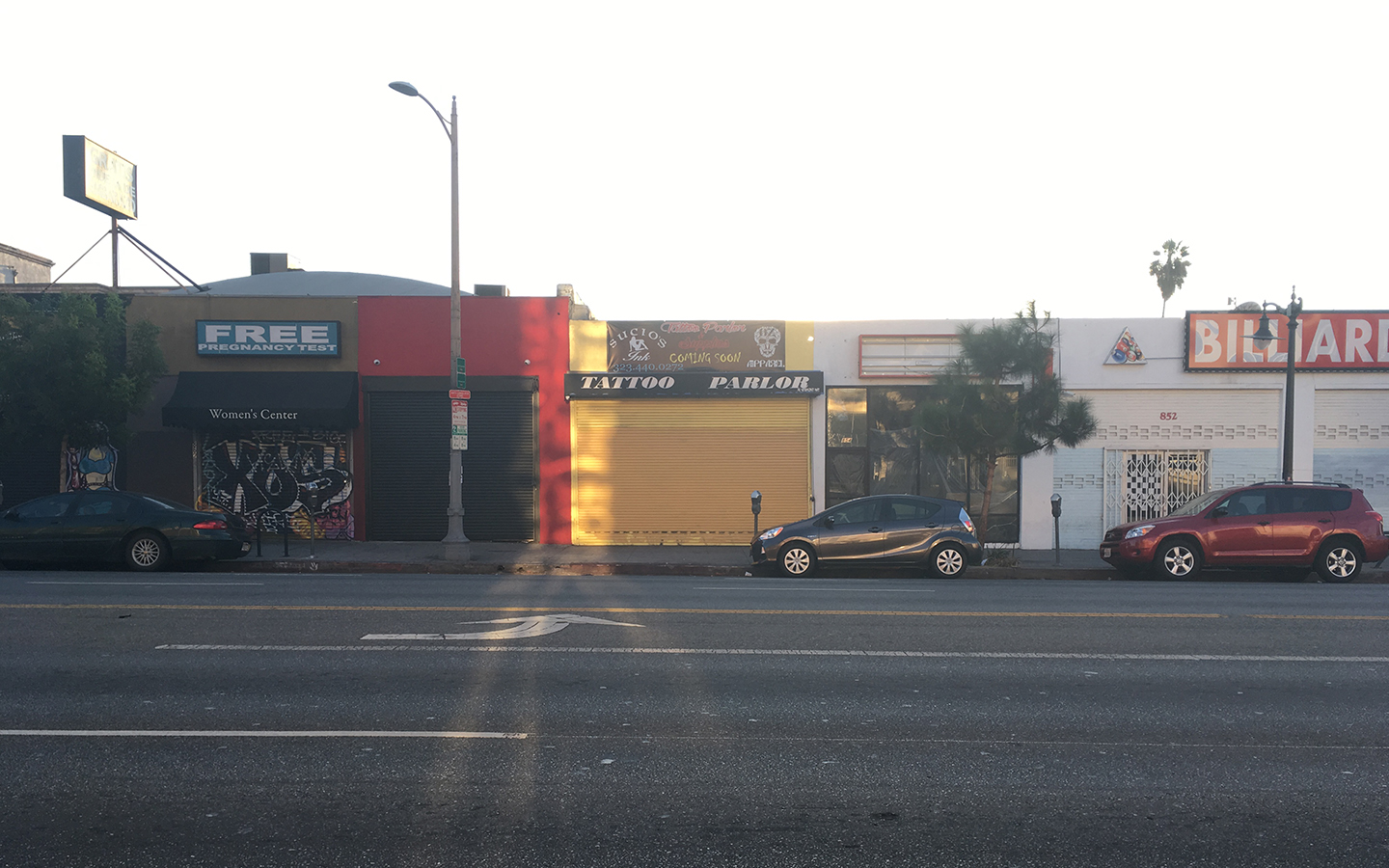
The tattoo art book was developed and designed collaboratively with the owner and tattoo artists of the tattoo parlor at Vermont street. They shared their feedback, provided crucial information about tools, techniques, how to take care of skin and different meaning of famous tattoo symbols. The book was later deployed at the LACC amongst the students.



What do people in the neighborhood think about tattoo culture?
![]()
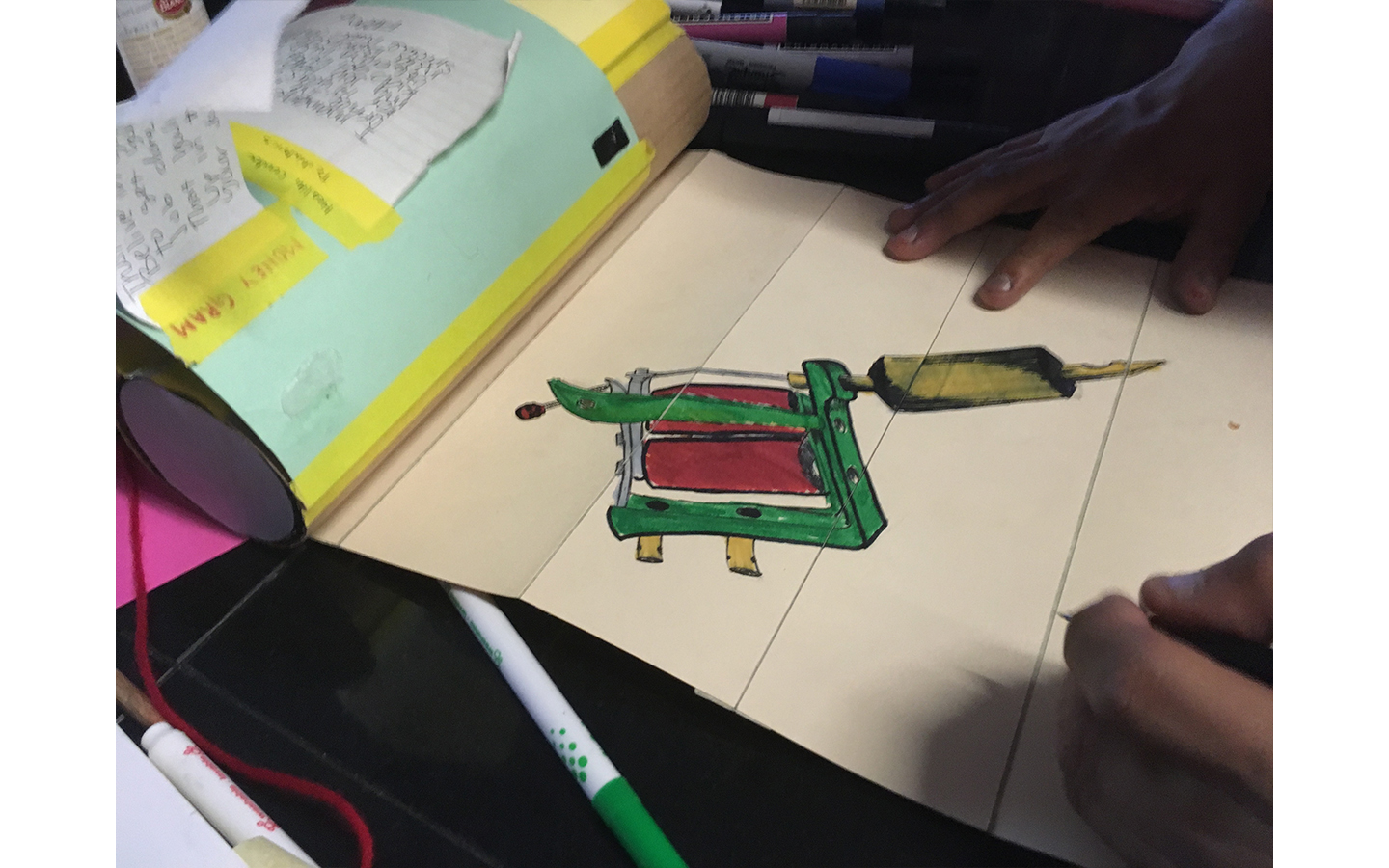

Does the assumption holds true?
How can design play a role?
Why would somebody want to learn about it?
Is it really knowledge?
How can design play a role?
Why would somebody want to learn about it?
Is it really knowledge?
FINAL DESIGN:
The final book emerged was created with the owners and employees of the tattoo parlour. They filled the information, drew and shared their experiences.








